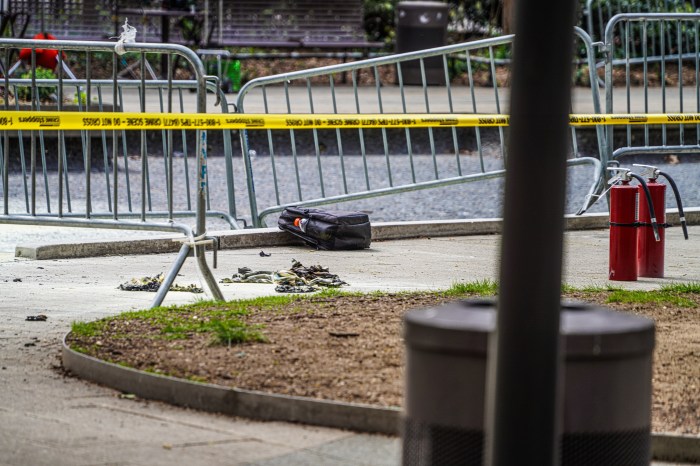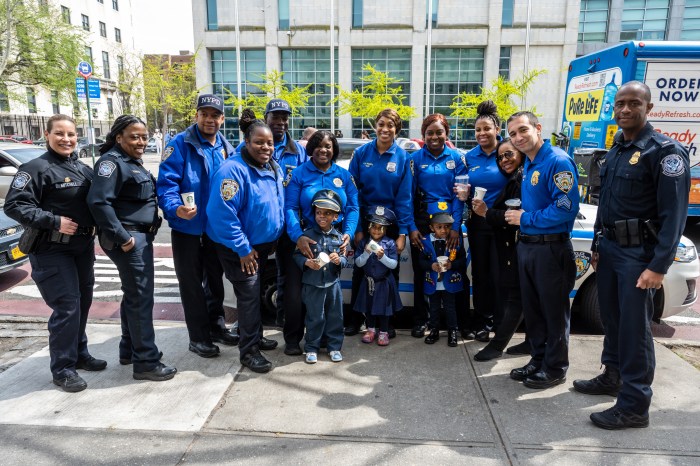Mayor Bill de Blasio’s administration launched the environmental review process Wednesday for four new jails his administration hopes will allow the city to phase out the detention complex on Rikers Island.
The Mayor’s Office of Criminal Justice Director Elizabeth Glazer announced the city intends to replace current detention facilities in Queens and Brooklyn with more modern, humane jails, and mimic this model where an administrative building in Manhattan stands and where an NYPD tow pound operates in the Bronx.
She said recidivism rates should fall when people are not housed in aging, violence-prone units on Rikers Island, but sheltered in jails integrated in communities closer to their homes and courts.
“We’re taking a big step forward in the process of closing Rikers Island and creating a modern community-based jail system that is smaller, safer and fairer,” de Blasio said in a statement.
Under the city’s vision, every borough would have a roughly 1,510-bed jail, except Staten Island. Inmates from that borough — currently about 250 — would be sheltered at the new Brooklyn jail, at 275 Atlantic Ave., the administration said.
The new jails would each have designated entrances and offer up amenities for nearby communities, which Glazer said may include affordable housing, retail, a youth center or other facilities sought by the neighborhood.
The housing cells would be designed to get more sunlight, offer guards better observation angles and provide space for programming, which would limit how often correctional staff must bring inmates through the halls to reach activities in other locations, according to Jeff Thamkittikasem, chief of staff at the city Department of Correction.
“If you compare that to some of the older models that exist now — you have long tiers, with a not very good line of sight, some blind spots . . . you have to have officers walking down the tiers, as opposed to from a central location, looking around, being able to kind of monitor and have better engagement,” Thamkittikasem said.
Space for those with more acute medical needs, pregnant inmates and parole violators is slated for the Queens jail, which would replace the 126-02 82nd Ave. detention facility and expand into part of a nearby parking lot.
In Manhattan, the administration plans to knock down 80 Centre St., which is used by the marriage bureau and district attorney and court staff. Their personnel would move into the southern tower of the detention facility at 125 White St. after it is renovated. The northern tower would eventually be decommissioned and could be redeveloped to meet various community needs, according to Dana Kaplan, deputy director of the Mayor’s Office of Criminal Justice.
Assemblywoman Yuh-Line Niou, who represents the area, released a statement admonishing the administration for altering the original proposed Manhattan jail location from 125 White St. without consulting the community.
The site eyed in the Bronx, at 320 Concord Ave., has prompted protest from local groups, which contend the Mott Haven area has been saddled with other undesirable city facilities, including a garbage transfer station and sewage treatment plants.
City Councilwoman Diana Ayala, who represents Mott Haven, did not respond to a request for comment.
Glazer, however, said the administration worked closely with lawmakers and others to find viable jail locations on public land close to courthouses.
The administration plans to hold hearings this fall to discuss what potential environmental impacts of opening the new jails should be examined.
City Hall then plans to advance all four sites in one land use application, which the administration expects to be voted on next summer. Glazer said it was too early to give cost estimates for the jails, which would take another five or six years to design and construct.
“We’re very much on track right now to meet the 2027 goal that we have to have new borough facilities,” she said.
Since de Blasio released a roadmap for closing Rikers last June, the island’s inmate population has dropped from 9,400 to 8,200, his office said. The mayor’s vision assumes the number of people held in city jails will drop further to about 5,000, but provides additional beds to allow flexibility in how various groups are housed.
Hitting that target will require working with the state to decrease the number of parole violators held in city jails, according to Glazer. About 625 such people are currently in city facilities, according to the administration.
When asked about parole violator policies, Tyrone Stevens, a spokesman for Gov. Andrew Cuomo, released a statement saying closing Rikers is essential for officers and inmates alike.
“Because the City repeatedly violated the civil rights of inmates, they are operating under a Department of Justice consent decree, which requires they be monitored for basic compliance with the law,” Stevens said in a statement. “If the City is serious about closing the atrocity that is Rikers, they’ll stop the deflecting and excuse-making, and just get it done.”
With Lauren Cook and Ivan Pereira

















